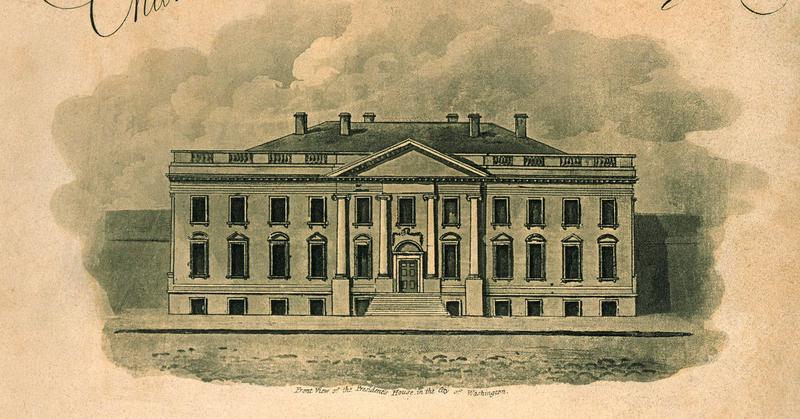The History Of The U.S.'s Peaceful Transition Of Power
By | January 18, 2021

For as long as the U.S. has had a government, a peaceful transition of power has been fundamental to American democracy: Without it, the whole thing comes crashing down. That doesn't mean the transition of power from one party to the next has always gone off without a hitch, however.
The First Peaceful Transition Of Power In The U.S.
It's no surprise that the initial transition of power from President Washington to President Adams took a while. Not only were they just figuring out how to even do that, there were no means of quick communication across distances longer than your average ballroom. It took weeks for telegrams with information about the transition to travel across the country and then more weeks for Adams and his people to actually get to Washington. As a result, it took three months for Adams to officially become president and move into the White House after his election in December 1796. As the years went on, technology sped up the process, but that doesn't mean that the transition became easier.

The Danger Of A Lengthy Transition
Today, it's customary for the outgoing president to brief the president-elect on exactly what situation they're walking into, but following the 1932 election of President Roosevelt, he straight-up refused to meet with then-President Hoover to discuss the crisis of the Great Depression or pretty much anything else. It wasn't just that Roosevelt didn't like Hoover, although he absolutely didn't. Mostly, he didn't want his hands tied by the previous president when he entered the White House.
It was no easy task, either. At this point in the United States, presidential inaugurations still took place in March, so Roosevelt had to go out of his way to avoid his predecessor for months. That's probably why, following Roosevelt's first go around the White House, he pushed all future presidential inaugurations up from March to January.

Eisenhower Was Not Playing
One of the most contentious transitions of the modern era, however, was that from Eisenhower to Kennedy. In the final 10 months of Eisenhower's presidency, the outgoing leader did everything he could to make the regime change as tricky as possible, pushing through last-minute policies regarding the Congo, the Dominican Republic, and Cuba that reverberated throughout Kennedy's time in office. As if that weren't bad enough, the Eisenhower administration ordered the U.S. military into Southeast Asia during its final days in office, forcing the Laotian military to interact with the Soviets and possibly handing a massive crisis to Kennedy on his first days in the White House.

Modern Transitions Of Power
The transition from Reagan to Bush, Sr. should have been easy enough, considering Bush was Reagan's V.P. for eight years, but the Bush administration wasn't sold on Reagan's love of Gorbachev, and it didn't help that Bush announced the termination of key government figures the morning after he was elected. Suffice it to say that life was rocky for President Bush in the early days of his time in office.
When Clinton took over the White House four years later, his transition was just as messy—for the opposite reason. He took far too long to settle on his cabinet after his first choice for attorney general ended up in hot water over hiring undocumented immigrants.
Interestingly, the transition that's considered a model of the peaceful transition of power in the U.S. is also one of the most recent. The transition from Bush, Jr. to Obama is still looked upon as the smoothest possible transition of power.

